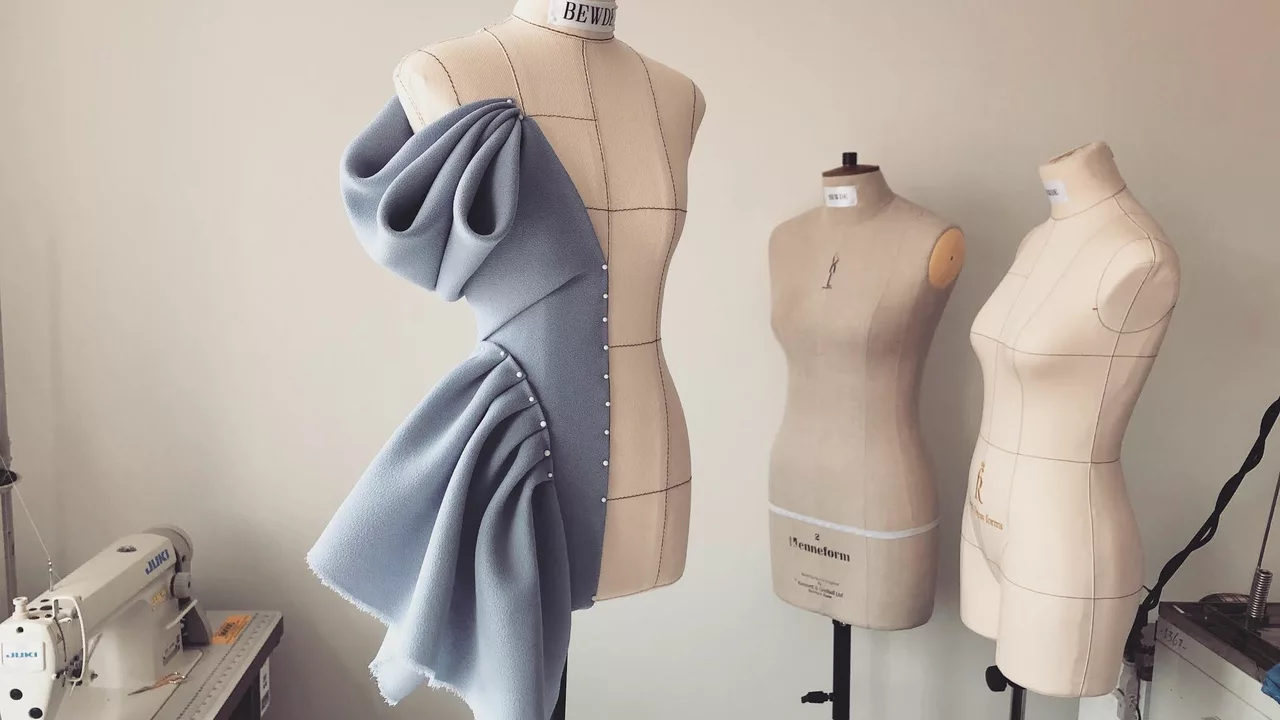Breaking the Patterns: A Journey into Draping
Stepping into my workroom on any given day, a myriad of fabrics clusters my space like a sea of creative chaos waiting to form into something unique and wonderful. You see, I'm not a pattern follower. I actually prefer to sculpt. But my medium isn't clay or stone; it’s fabric. Draping fabric on dress forms is my forte, manipulating the lightweight fluff into avant-garde sculptures that eventually become wearable art. Using fabric as a 3D palette allows me to craft silhouettes from the raw textile material instead of following the conventional method of patternmaking. If you've ever been curious about this process, buckle up - we're diving head-first into the world of fabric draping.
In the Realm of Dress Forms: Why It Matters
Just as a sculptor needs a base to build their masterpiece, designers like me use dress forms to carve out 3D silhouettes from various textiles. It's all about getting those measurements and proportions right. A slight mismatch can send the entire design into oblivion. Dress forms are our faithful guides leading us into this realm of 3D sculptures from fabric. Each curve and hollow is a reference point, allowing us to carve out silhouettes with precision, enhancing or altering the natural form of the human body with fabric. I still remember the time I draped my first piece – it was a complete disaster piece, and yet I was thoroughly proud, affirming my desire to continue experimenting.
Buying the Perfect Dress Form
Before your mind begins creating magnificent masterpieces, selecting the right dress form is critical. It's as vital as selecting the right brush for a painter. It's not just about the visual charm of the dress form but its function. From accurate measurements to adjustable sizes and collapsible shoulders, the form should be as versatile as the designs you plan to drape on them. Remember, your dress form is your creative partner, so choose wisely, and don't rush. Similarly, always keep it dressed in muslin or any standard fabric to protect it from wear and tear.
The Art of Manipulating Fabric
Textiles have always had a voice of their own. Each fold, each crease it forms, and how it forms over the dress form, speaks volumes. And this is where the magic happens – manipulating the fabric to follow your whims and fancies. Drape, fold, twist; it's a manipulation game, one that requires equal parts patience and skill. There's a certain thrill to it; each tug and pin creating a new line, a new curve, a new silhouette. It's like playing around with a piece of clay, only in this case, the clay is fabric, and your hands are the skilled craftsman.
Fabric Shopping: Choosing the Right Material
Not all heroes wear capes; some are just disguised as rolls of fabric in your local store. Believe me, the fabric choice can make or break your draping game. With countless options available, it can be a bit overwhelming. To make life simple and your design stunning, always look for fabrics that are fluid and not structured, ones that will drape well, such as chiffon, silk, or satin. Medium to lightweight fabrics are a joy to work with, especially if you are starting out.
The Dance of Pins and Folds
Juggling pins and fabric at the same time can feel like a magic trick. But it's an essential skill that every draper must master. The more at ease you are with pins, the better you'll be at executing your designs. And this isn't just about pinning a few pieces here and there. It's about creating neat and precise folds that emulate the vision you have in your head. It's an enjoyable dance between pins, fabric, and your imagination. I remember the time I spent entire nights trying to master this dance, and the result was a dress that my mum still has hung in her closet.
From Sculpted Fabric to Final Dress: Making It Real
So you've got your dream design draped on your dress form. Next comes the tricky bit: transferring your draped design onto a real dress pattern. This stage often feels like a detective's job. Converting your design into a 2D flat pattern is the penultimate step before the production of your final piece. With your drape as a reference, working on a flat pattern should prove less daunting. There's a charm to draping that trumps the more usual route of patternmaking; each fold and pleat is a story in itself.
In conclusion, draping is an art form that requires practice and perseverance, patience and passion. Much like any craftsman refining their skills, as a draper, every textile becomes a canvas. It's all about letting your imagination run wild and bringing forth designs that inspire awe and wonder.

Hello, my name is Kieran Beauchamp, and I am a fashion and beauty expert with years of experience in the industry. I have worked with renowned fashion houses and beauty brands, enabling me to develop a distinct eye for style and aesthetics. My passion for writing has led me to create engaging content about the latest trends, tips, and tricks in fashion and beauty. I believe in empowering others to feel confident in their appearance and take pride in sharing my knowledge with those seeking to enhance their style.